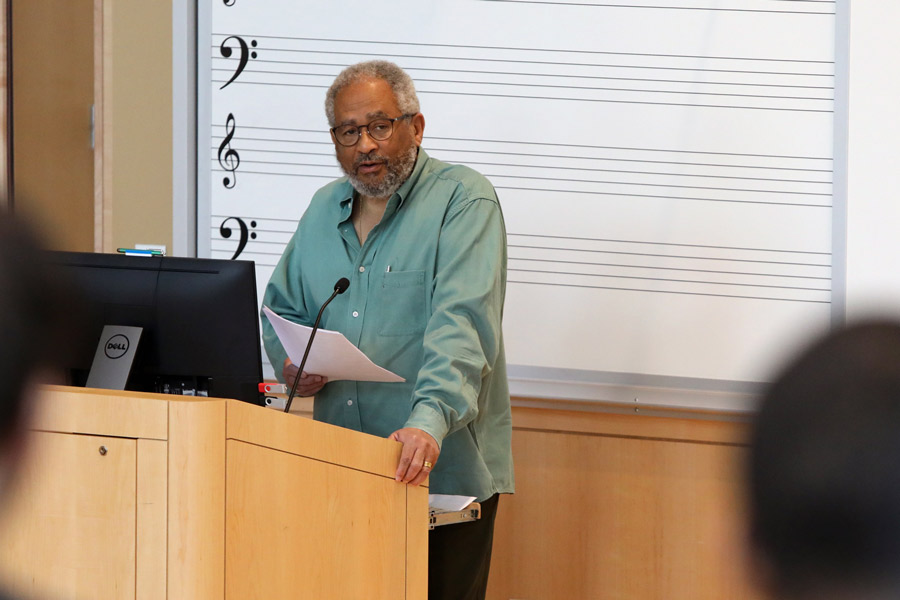- Apply
- Visit
- Request Info
- Give



Published on March 10, 2020

As a part of Eastern Connecticut State University’s art exhibition “Creating Dangerously: Art and Revolution,” the University’s Art Gallery welcomed Anthony Bogues, Caribbean historian, writer and political theorist on March 4. Bogues, who is the director of the Center for the Study of Slavery and Justice at Brown University, presented a lecture on memory, history and the revolution of Haitian art after the Haitian Revolution.
The “Creating Dangerously: Art Revolution” exhibit will be on display through March 12. The exhibition focuses on six Haitian artists,Vladimir Cybil Charlier, Edouard Duval Carrié, Sasha Huber, Pascale Monnin, Nyugen E. Smith and Didier William, who draw on the history of their homeland’s revolt against imperialist oppression to challenge Western culture’s understanding of Haiti and the Caribbean.
The exhibition displays art pieces inspired by Haiti’s legacy of slavery, revolution, exile and diaspora. Bogues, whose expertise includes the dissection of Haitian art and history, began his lecture by stating, “The most important question in the world during the 1700s was slavery and colonialism. Therefore, any revolution that attacked or attempted to transform that was the most radical.”
During his lecture, Bogues shared his thoughts and findings on Caribbean philosophy and black radical thinking by describing the Haitian Revolution as “a dual revolution of slavery and independence — the most radical revolution during the period of the so-called age of revolution of the 18th century.”
Bogues went on to explain how the current version of Haitian history often begins with the revolution. While it is clarified through historians, scholars and writers, a key component and representation of the revolution is expressed by painters and artists.
Bogues concluded his lecture with an analysis of Haitian and Caribbean art in Western art museums. “When the question of when and how Haitian and Caribbean art pieces were acquired arose, it was revealed that a major exhibition happened in Paris where Europeans began to think about coming to Haiti to buy pieces.”
The Art Gallery is open Tuesday and Wednesday 11 a.m.–5 p.m.; Thursday 1–7 p.m.; and Saturday and Sunday 2–5 p.m. Admission is free and open to the public. For more information, contact the Art Gallery at 860-465-4659 or visit the website at https://www.easternct.edu/art-gallery/.Written by Bobbi Brown